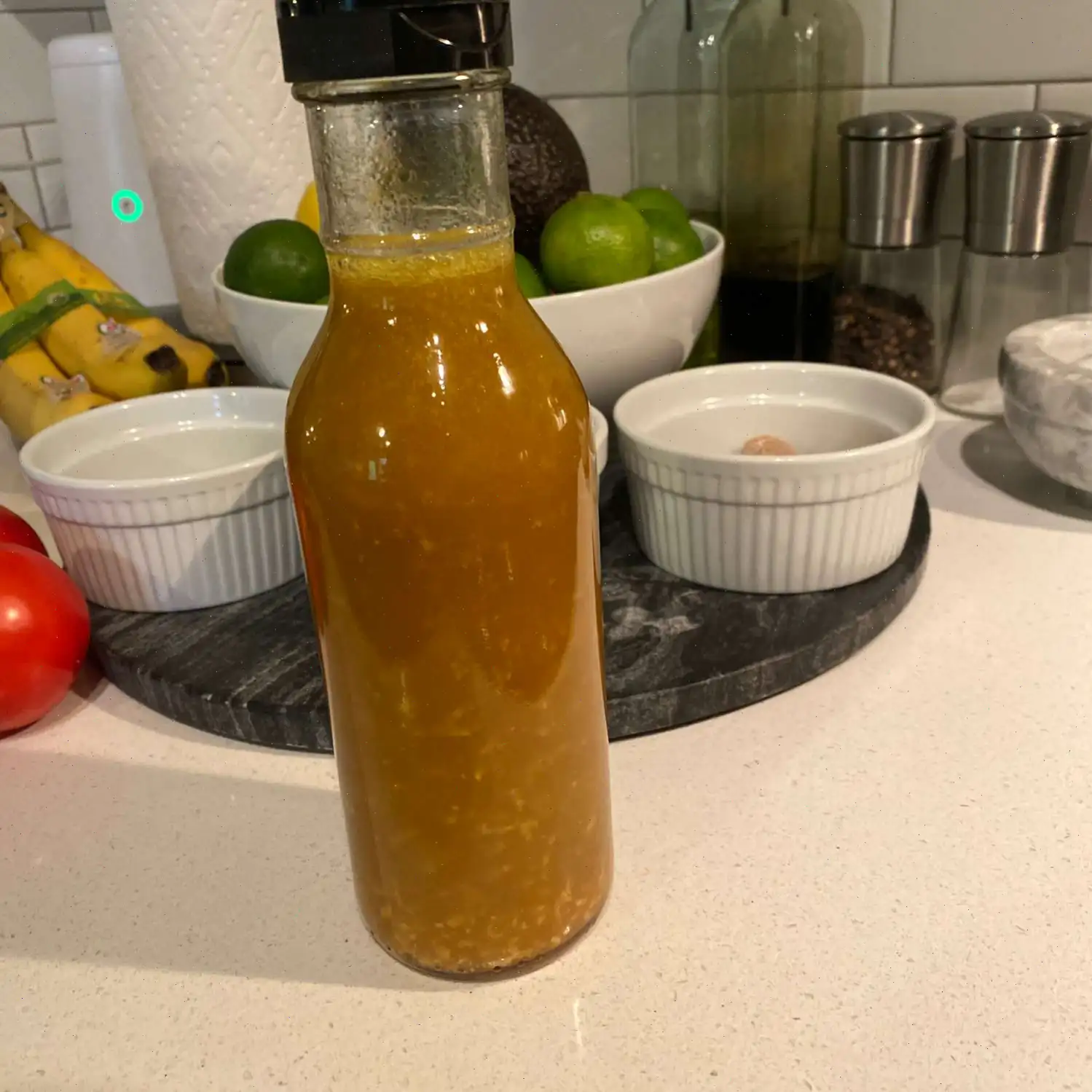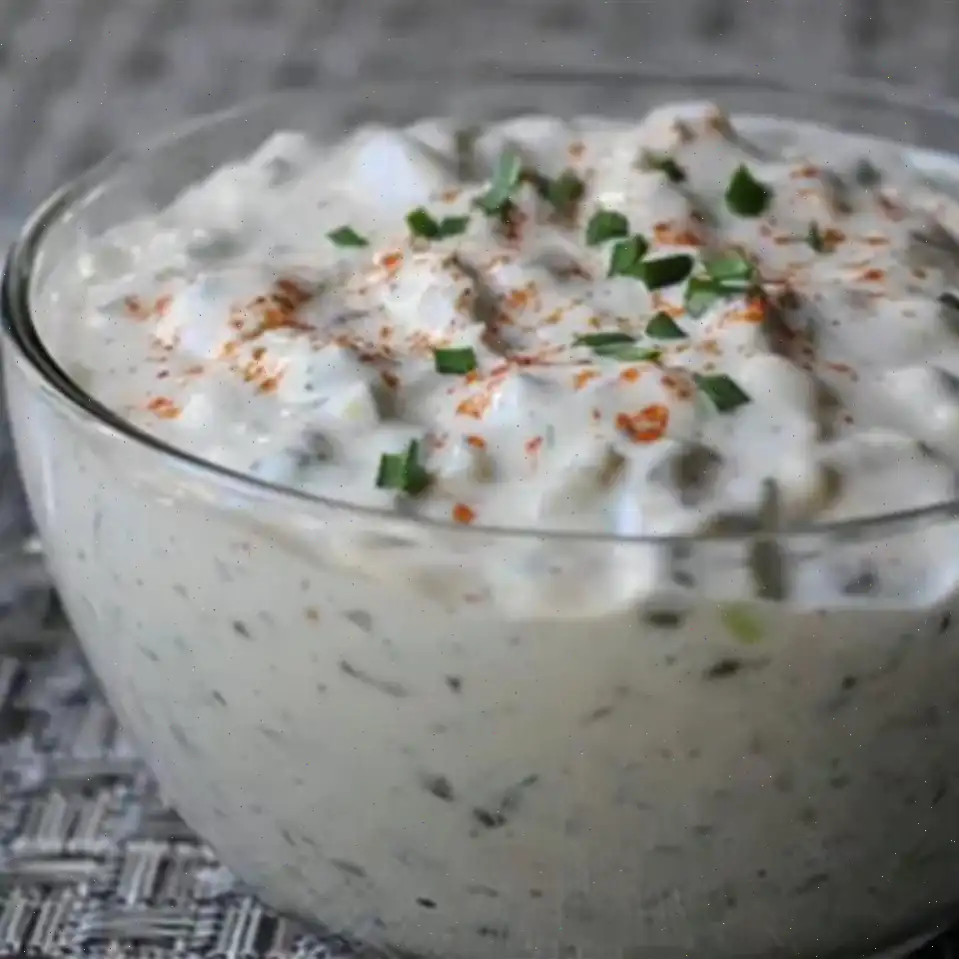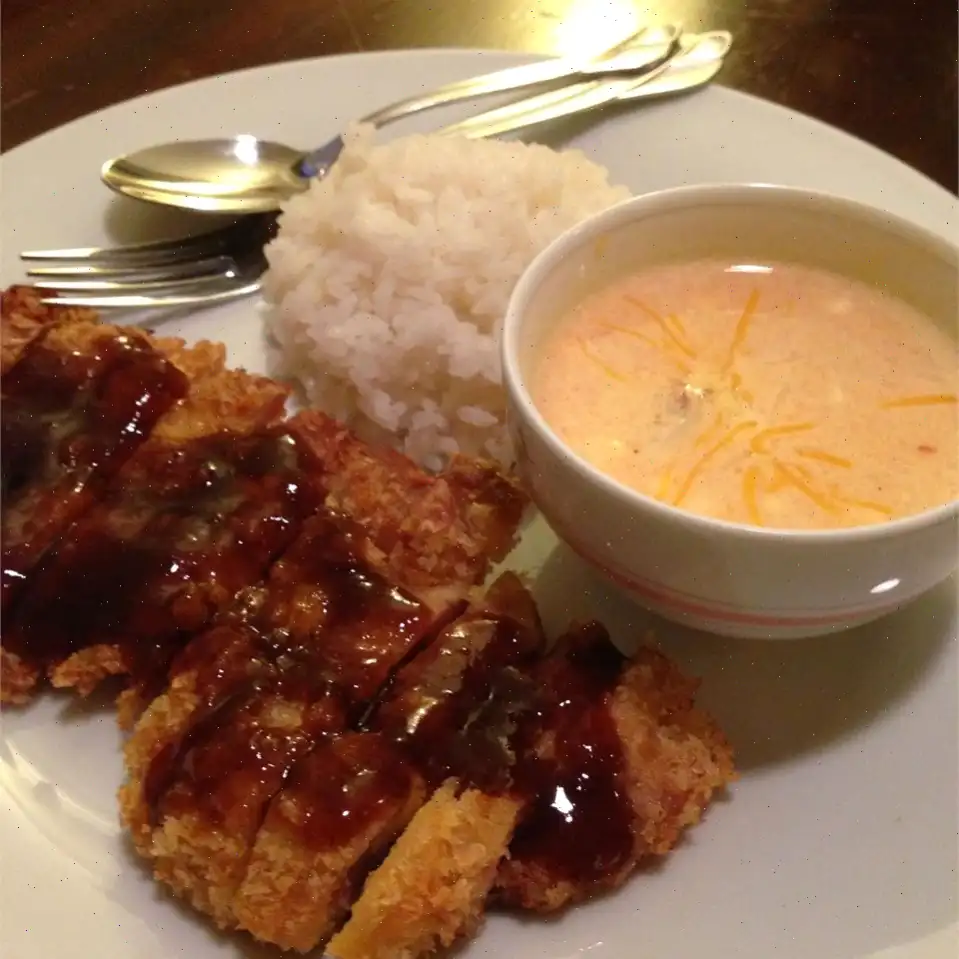
Japanese-Style Ginger Salad Dressing Recipe
Ingredients
- cup soy sauce
- 1 lemon, juiced
- 3 cloves garlic, minced
- 3 tablespoons minced fresh ginger root
- 2 teaspoons honey
- 1 teaspoon Dijon-style mustard
- Ground black pepper to taste
- 1 cup olive oil
Directions
Step 1: In a small bowl, whisk together the soy sauce, lemon juice, garlic, ginger, honey, mustard, and pepper until fully combined.
Step 2: Gradually add the olive oil in a steady stream, whisking constantly to incorporate the oil into the dressing.
Step 3: Once the dressing is well mixed, pour it into a glass jar or and refrigerate until ready to serve.
Nutrition Facts (per serving)
- Calories: 170
- Total Fat: 18g (23% Daily Value)
- Saturated Fat: 3g (13% Daily Value)
- Sodium: 312mg (14% Daily Value)
- Total Carbohydrates: 3g (1% Daily Value)
- Dietary Fiber: 1g (2% Daily Value)
- Total Sugars: 1g
- Protein: 1g (1% Daily Value)
- Vitamin C: 7mg (8% Daily Value)
- Calcium: 8mg (1% Daily Value)
- Iron: 0mg (2% Daily Value)
- Potassium: 34mg (1% Daily Value)
* Percent Daily Values are based on a 2,000 calorie diet. Your daily values may be higher or lower depending on your calorie needs.
** Nutrient information is not available for all ingredients. Amount is based on available nutrient data.
(-) Information is not currently available for this nutrient. If you are following a medically restrictive diet, please consult your doctor or registered dietitian before preparing this recipe for personal consumption.
This ginger salad dressing comes together in minutes for the perfect combination of sweet, salty, and umami flavors. Try it over any green salad!
History and Origins
The Japanese-style ginger salad dressing has its roots in Japanese cuisine, where it is commonly used as a topping for salads, especially in traditional Japanese restaurants and sushi bars. This tangy dressing is not only popular in Japan but has found its way into various international menus, particularly in the United States, where its often served in Japanese-American restaurants. The dressings combination of fresh ginger, soy sauce, lemon, and honey gives it a uniquely balanced flavor profile that complements both simple green salads and more elaborate dishes. Its popularity in Western countries grew during the 1980s as Japanese food culture became more mainstream.
Regional Variations
While this dressing is quintessentially Japanese, there are several regional variations depending on where it is made. In Japan, the dressing might be made with rice vinegar instead of lemon juice, giving it a more subdued tang. In the United States, it is often made with a sweeter flavor profile, using honey or even sugar, and may feature additional ingredients like sesame oil or garlic for extra depth. Some versions even incorporate carrots, turning it into a carrot-ginger dressing that is commonly served in salad bars. Additionally, in places like Hawaii, the dressing may be enriched with tropical fruits or made with more sesame oil for a richer flavor.
How It Differs From Similar Dishes
Ginger salad dressing stands out from other salad dressings due to its use of fresh ginger, which provides a sharp and spicy flavor that is not found in more typical Western dressings like ranch or vinaigrette. Compared to a classic Caesar dressing, which is creamy and tangy, or a balsamic vinaigrette, which leans heavily on the sweetness of balsamic vinegar, the ginger dressing offers a lighter, more invigorating flavor that can cut through the richness of heavier ingredients like grilled meats or fatty fish. Furthermore, unlike mayonnaise-based dressings, Japanese-style ginger dressing is oil-based, making it a bit lighter and fresher.
Where It Is Typically Served
Japanese-style ginger salad dressing is commonly found in sushi restaurants, often accompanying a simple green salad to balance the richness of sushi or sashimi. It is also a popular topping for Asian-inspired salads and is often used as a marinade for meats, particularly chicken and fish. Outside Japan, this dressing has become a beloved addition to Western salad menus, offering a unique flavor that contrasts beautifully with more traditional American dressings. It can also be served alongside grilled vegetables or used as a dip for appetizers like spring rolls or tempura.
Interesting Facts
1. The key ingredient in Japanese-style ginger salad dressing is fresh ginger, which is known for its many health benefits, including aiding digestion and reducing inflammation.
2. The dressings distinct balance of sweet, salty, and sour flavors comes from a mixture of honey, soy sauce, and lemon, which are all staples of Japanese cuisine.
3. While its commonly used as a salad dressing, it also works great as a marinade for proteins, particularly chicken and fish, infusing the meat with a vibrant, zesty flavor.
4. Some variations of this dressing include sesame oil or peanut oil, which adds a nutty depth to the flavor and complements the gingers sharpness.
5. If prepared ahead of time, this dressing can separate in the fridge, but a quick shake or stir will bring it back to its original consistency.
FAQ about Japanese-Style Ginger Salad Dressing Recipe
Comments
Allrecipes Member
10/06/2025 01:52:54 PM
This is one of the best Ginger dressings I have ever tasted. The only 2 things I do differently are add 2 tablespoons of rice vinegar and use a grinding bowl instead of mincing the ginger. Grinding it makes it more pasty and juicy.
Mauricio G Rodriguez-Troncoso
03/21/2015 12:28:14 PM
I've been making this dressing since last year. I made some changes though, such as substituting 50% of the olive oil for sesame oil, plus adding 2x the amount of fresh ginger root in the original recipe. (It is a ginger dressing after all, isn't it?). I also sprinkled some sea salt, not considered in the original recipe. In addition, instead of wasting time mincing the garlic and the ginger, I cut up both of them in middle-size chunks; add the rest of the ingredients EXCEPT THE OIL, and put the whole thing in a food processor. After getting a very smooth mix, I add up the 50-50 oil little by little. The final product has made me get a lot of compliments and this dressing happens to be my wife's favorite !
AquaViridian
07/05/2016 02:04:20 PM
I LOVE this recipe, and I'd give it 10 stars if possible! The only thing I changed was the amount of olive oil from one cup to 1/4 cup, but that was just because I'm not a fan of a lot of oil. I also grated the garlic and ginger instead of mincing them, but kept the quantities. This is my new go to for salad dressing and marinade, and I will surely tell my friends and family about this great find!!
Jenny
08/12/2013 11:57:00 AM
I just made this in the food processor with the following tweaks: - I peeled the ginger root and then threw the entire root in - I peeled and removed the seeds from the lemon and then threw the lemon in, pulp and all - followed others' suggestions by doing 1/2 olive oil, 1/2 peanut oil This gave the dressing a thicker consistency. Very tasty! I used to live in Tokyo and this is very close to what I enjoyed there.
Booko
04/23/2010 04:29:55 PM
I made a few modifications to this: I used half the lemon and added rice vinegar to taste instead. I didn't bother with the pepper (though if I had I think white pepper is more traditional.) I did use less soy sauce -- probably half as much. And I used powdered yellow mustard and not prepared mustard. It makes for a slightly runnier dressing, but it's nothing a little arrowroot couldn't cure if you insist on it being thick. I used my food processor -- first the ginger and garlic, then I added about 1/4 the olive oil and let it run until the texture was very fine. The taste came out just like the Japanese restaurant near my house. For those of you having problems with bitterness -- if you're reduced to buying fresh ginger at a major American grocery store -- find somewhere else. The stuff in normal grocery stores has sat around for goodness knows how long. I buy my ginger at an Asian market and it's always very fresh. Old ginger is tough and bitter. A store like Whole Foods or Fresh Market would be better if you don't live in an area that has Asian markets. For those having problems with the olive oil, I used a good quality extra virgin olive oil. I may use cheaper olive oils for other things, but for salad dressings I don't ever skimp. If you're using something like Bertolli's Light Olive Oil, that would make it bland and greasy.
Amy Buckley Grant
06/26/2013 06:53:52 AM
Delicious! I used half olive oil, half sesame oil (like others recommended), and substituted ground ginger since I didn't have any fresh. I added the ginger last, beginning with about 1/8 t and kept adding until it tasted good. I probably used about 1/2 t altogether. I used to live in Japan. This reminds me of my time there. Thanks for sharing!
Azure
06/26/2025 02:43:33 PM
For starters, no this doesn't taste anything like a Japanese steakhouse dressing. That said, it's not awful, and I enjoyed it well enough. I did use a food processor to ensure the bits of ginger and garlic were extremely tiny. Also a side note, if you make it ahead of time -- it will separate AND solidify in the fridge. This is fine because you can just take it out about 15-20 minutes before serving to let it liquify again, then shake the jar vigorously to re-incorperate everything.. just something to be aware of when timing which dishes come out.
JOHNMONIHAN
01/12/2009 06:14:42 AM
As this recipe is written, it's slightly better then OK. Here's what I did...I combined all the ingredients in a salad dressing shaker until well blended. I sampled the mixture, and it was a little tart. So I added 1/4 C white sugar, and stirred until mixed. Still needed some more, so I added 1/8 C of sesame oil, and a splash more of soy sauce. Now it tasted better. When I added the olive oil to the shaker, it was less then a cup since I had no more room left. My wife and I both agree that this dressing, with my changes, now is a 5-star dressing and she compared it to some of the store bought sesame-ginger dressing. For those who like more of a ginger flavor, use powdered ginger. I tried this with 2 T of powder in lieu of the 3 T of fresh, and the ginger flavor was very strong. I use this (revised) dressing on my salads, I use it to marinate chicken thighs, and I use it as a dressing on sandwiches.
James C.
07/13/2014 11:53:41 AM
Three easy changes to make this awesome- 1)I use canola oil instead of olive oil (more neutral flavor) 2)I add a handful of chopped baby carrots (this is traditionally served as a carrot ginger dressing) 3)I do not whisk this- use a food processor and blend until smooth adding the oil a little at a time. You'll have a smooth texture and visually pleasing dressing.
taymay13
08/12/2010 04:07:32 PM
Good, but I made a couple changes. I did half seseme oil and half olive oil. I double (or even tripled) up on the honey and mustard since the soy sauce took saltiness to the extreme. To thicken the dressing I added 2 T of mayo and 1T of corn starch. Before refridgerating I stuck it all in the blender to emulsify better than just whisking... YUM!
Ann
07/23/2009 01:47:35 PM
Pretty spot on compared to the dressings served at sushi places near me. I reduced the olive oil significantly (only used about 1/4 c.) and added 1T sesame oil. I also omitted the honey and added 2T rice wine vinegar. I grated the ginger and then threw everything into my blender. It was great and I'll definitely make it again.
CrispFeta2189
06/16/2025 11:42:57 PM
Great!!’
Jeannie
04/29/2025 08:14:41 PM
It’s delicious!
Patrick Adams
09/21/2024 02:39:26 AM
Quick dinner that actually impresses — unreal.
necorkum
07/03/2024 02:46:42 PM
Absolutely made my pasta salad sing
Jenny Levina
05/01/2024 08:10:44 PM
I love this dressing! It is exactly what I was looking for. This is a ginger dressing that actually uses ginger, and tastes like ginger. Absolutely delicious!
john geiger
11/28/2023 12:13:11 AM
Easy to make, tastes awesome!
ChillyPan9708
10/25/2022 03:07:34 PM
so good
AmberOkra6337
05/02/2022 01:48:12 AM
It was easy and good, better than spending $7 on a small bottle
Carolina Spanton
12/04/2020 01:04:29 AM
It was very good!!








